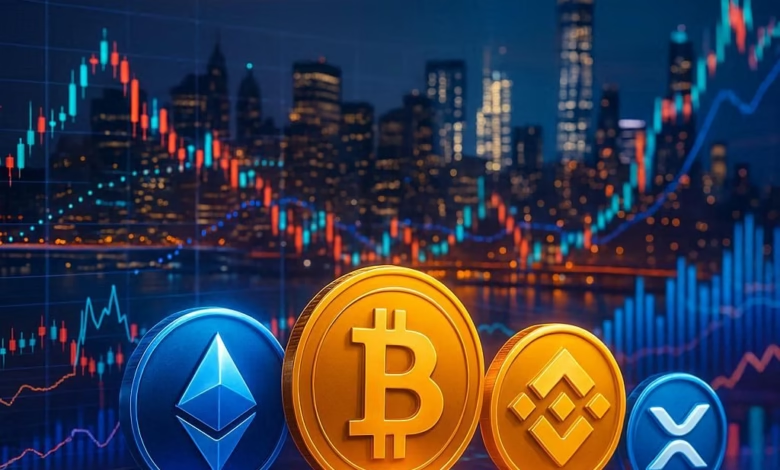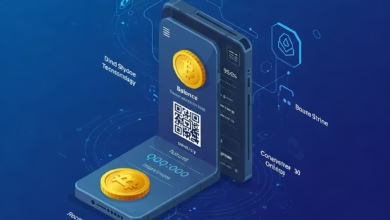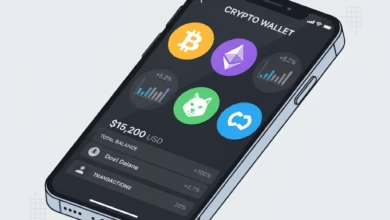What investors need to know before buying altcoins
Understand everything you need to know before entering the altcoin market

The world of cryptocurrency is much larger than just Bitcoin. While Bitcoin dominates the headlines, a universe of thousands of other digital assets, known as altcoins, exists. Altcoins represent a thrilling but highly volatile frontier for investors. If you’re considering diversifying your crypto portfolio beyond Bitcoin and Ethereum, it’s crucial to understand the unique risks and opportunities they present.
This guide will walk you through the essential information you need to know before you invest in altcoins, helping you make smarter, more informed decisions.
Altcoins Explained: Understanding Their Role in the Crypto Market

Altcoin is a portmanteau of “alternative coin.” Essentially, any cryptocurrency other than Bitcoin is considered an altcoin. The first altcoins were created to improve upon Bitcoin’s technology, often focusing on faster transaction speeds, lower fees, or new features like smart contracts.
The altcoin market is incredibly diverse. You’ll find different types of altcoins, each with its own purpose:
- Stablecoins: Designed to maintain a stable value, typically pegged to a fiat currency like the US dollar. They are used for transactions and as a safe haven during market volatility.
- Utility Tokens: These provide access to a specific product or service on a blockchain platform. For example, a token might be used to pay for network fees or to vote on project governance.
- DeFi Tokens: Tied to decentralized finance (DeFi) protocols, which aim to replicate traditional financial services without intermediaries.
- Memecoins: Cryptocurrencies that gain value primarily from internet memes and social media hype rather than from fundamental utility or technology.
The Altcoin Advantage: High Risk, High Reward Potential
One of the most attractive aspects of altcoins is their potential for massive growth. While Bitcoin’s value is more stable, many altcoins have smaller market caps, meaning a surge in interest can lead to explosive returns in a short period. This is often driven by a new technological breakthrough, a successful partnership, or increased adoption of the project’s network.
However, this high reward potential is directly tied to an equally high level of risk. Altcoins are far more volatile than Bitcoin and are highly susceptible to market sentiment and speculation. A project that skyrockets in value one day could crash the next, leaving investors with significant losses.
5 Critical Questions to Ask Before You Buy an Altcoin

Before you invest your money, always remember the golden rule: Do Your Own Research (DYOR). Avoid making decisions based on hype, social media trends, or the fear of missing out (FOMO). Instead, use a structured approach to evaluate a project’s potential.
Here are five key questions to guide your research:
1. What Is the Project’s Whitepaper and Core Mission?
A whitepaper is a foundational document that outlines a crypto project’s purpose, technology, and roadmap. A legitimate project will have a clear, well-written whitepaper that explains its problem-solving mission. Avoid projects with vague or non-existent documentation. Focus on understanding the real-world utility of the token. Does it solve a real problem or is it just a speculative asset?
2. Who Is the Development Team and How Is the Community?
A strong, transparent team is a huge green flag. Look for developers with verifiable experience and a history of successful projects. A project with an active, engaged community on platforms like Twitter and Discord shows a healthy and growing ecosystem. Be wary of projects with anonymous teams or communities filled with hype and empty promises.
3. What Is the Tokenomics and Market Capitalization?
Tokenomics refers to the economics of a crypto project—how its tokens are distributed, used, and valued. Key metrics to check are:
- Total Supply: The maximum number of coins that will ever exist. A limited supply can create scarcity.
- Circulating Supply: The number of coins currently in the market.
- Market Cap: Calculated as Circulating Supply x Current Price. A low market cap indicates a higher risk but also higher potential for growth.
4. What Are the Security and Technology of the Blockchain?
Altcoins are built on different technologies. Some use their own blockchain, while others are built on existing platforms like Ethereum. Research the security of the underlying technology. For example, is the network’s code open-source and has it been audited by third-party security firms? Understanding the consensus mechanism (e.g., Proof of Work vs. Proof of Stake) can also provide insights into the network’s security and efficiency.
5. What Is the Liquidity and Where Can I Buy It?
Liquidity refers to how easily you can buy or sell a cryptocurrency without affecting its price. Low-liquidity altcoins are harder to sell, especially in large volumes, and are more vulnerable to price manipulation. Check which exchanges a coin is listed on. A listing on major, reputable exchanges often signals a certain level of legitimacy and liquidity.
Final Thoughts: The Importance of a Diversified Approach

Investing in altcoins can be a thrilling journey, but it’s not for the faint of heart. Always remember that the crypto market is unregulated and prone to extreme swings. Never invest more than you can afford to lose.
A smart strategy is to build a diversified portfolio. While Bitcoin and Ethereum can be your foundation, you can add a small percentage of your portfolio to well-researched altcoins. This approach allows you to participate in the high-growth potential of altcoins while managing your overall risk. The key is to stay patient, stay informed, and always prioritize long-term value over short-term gains.





